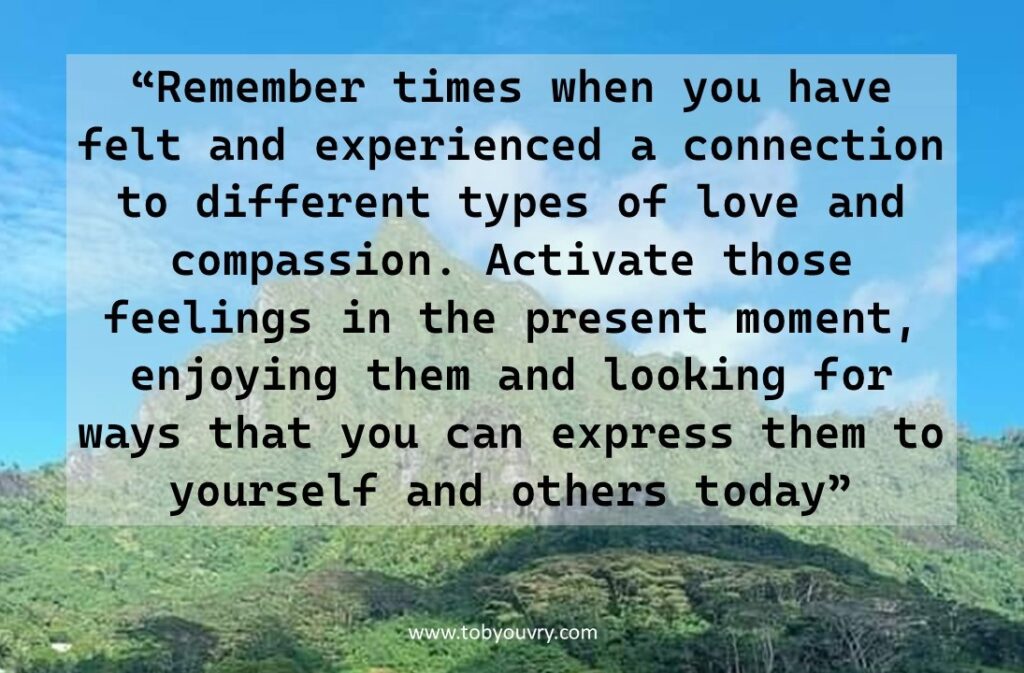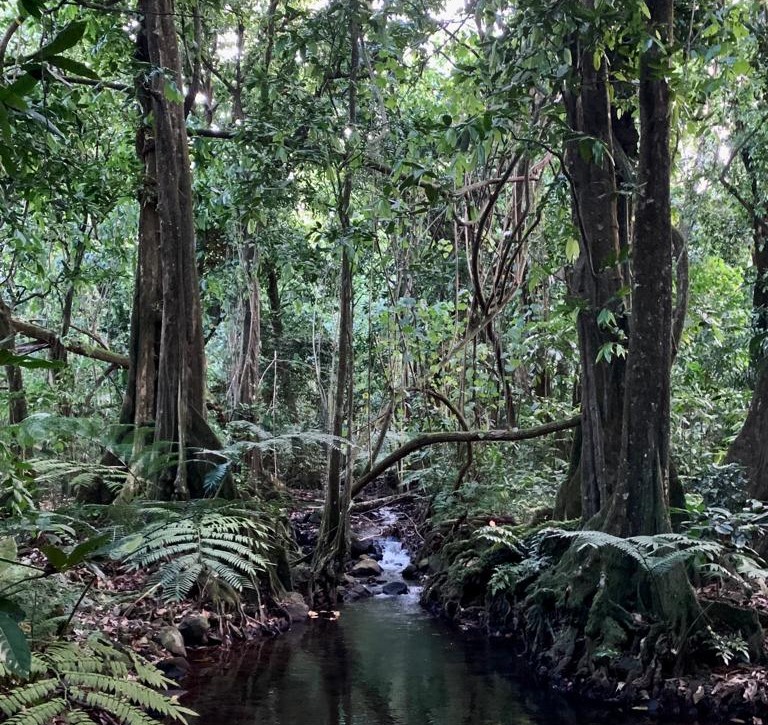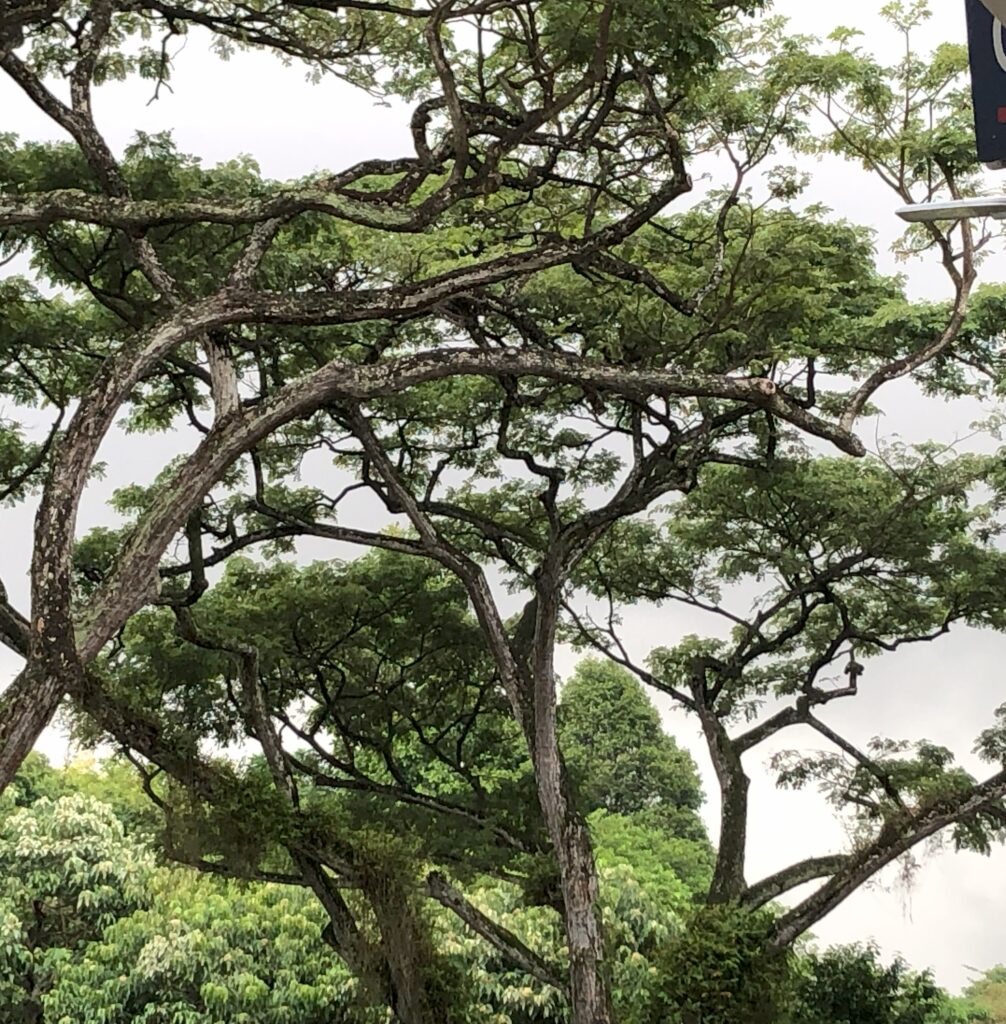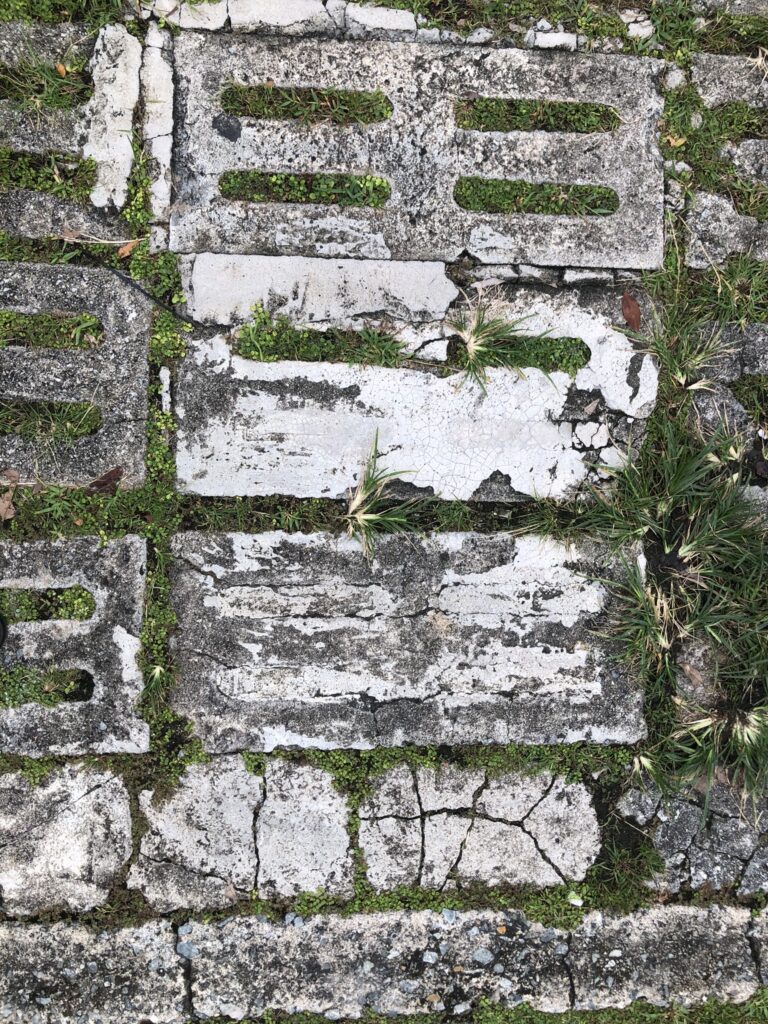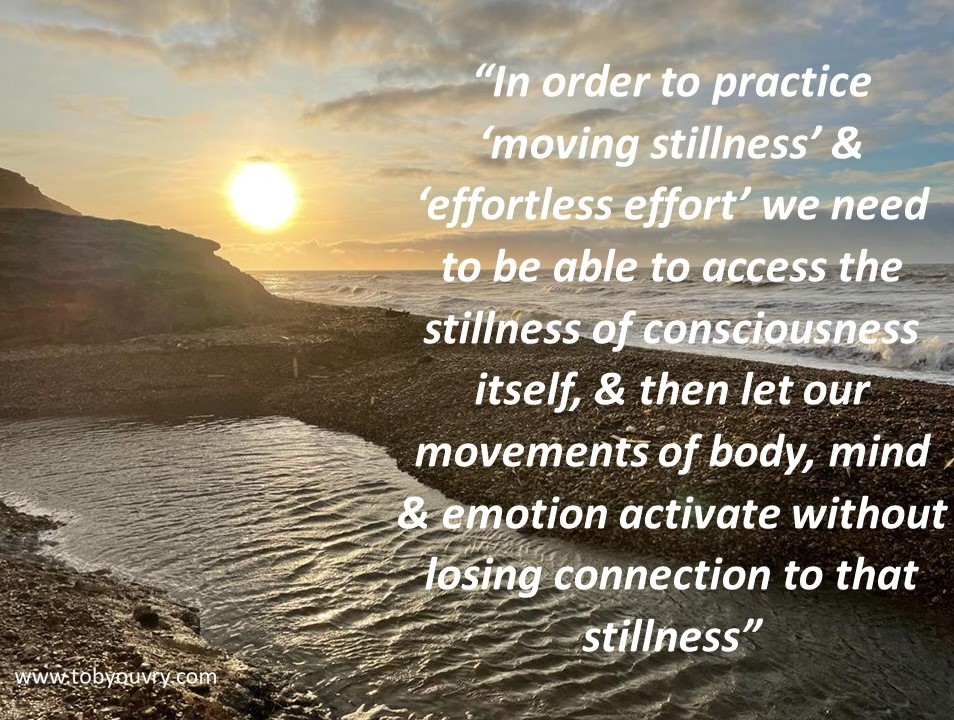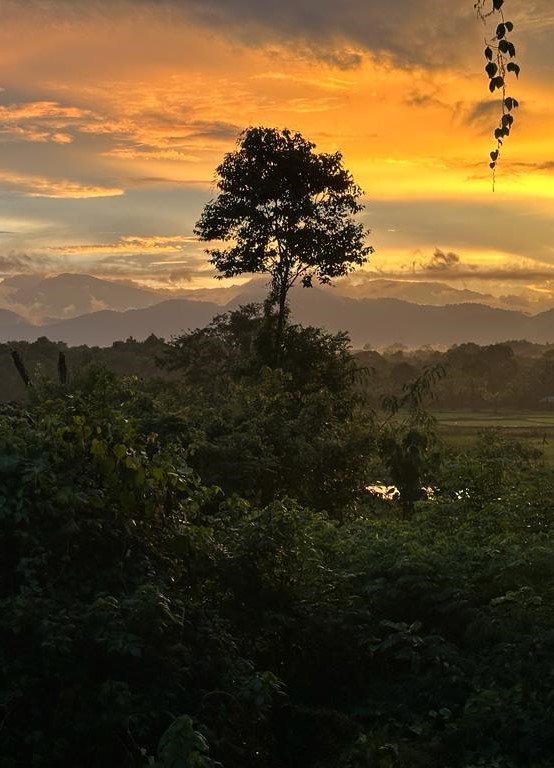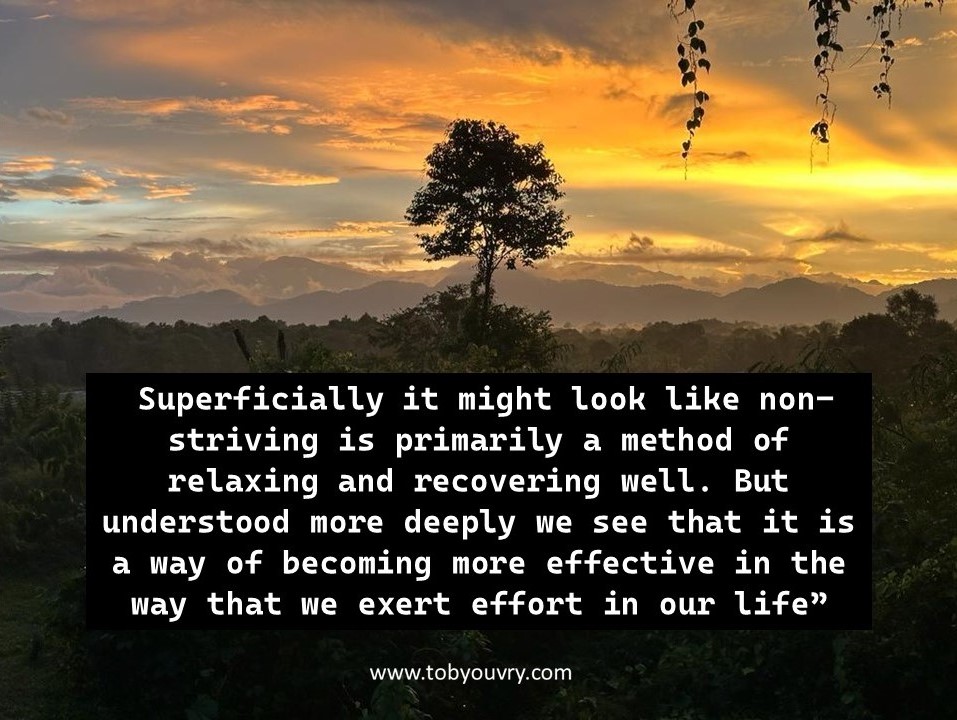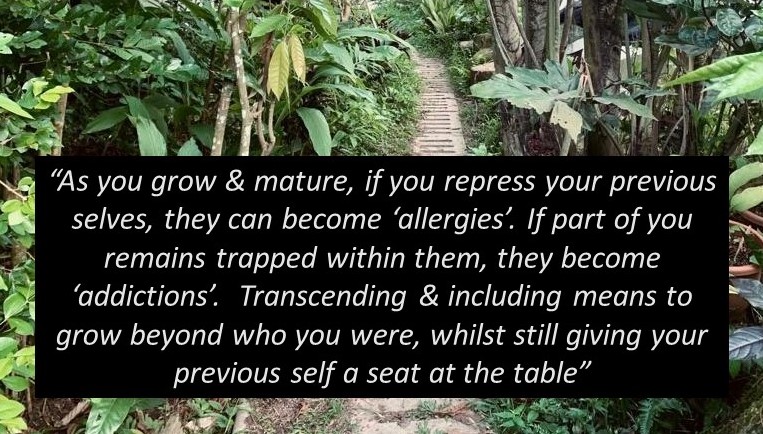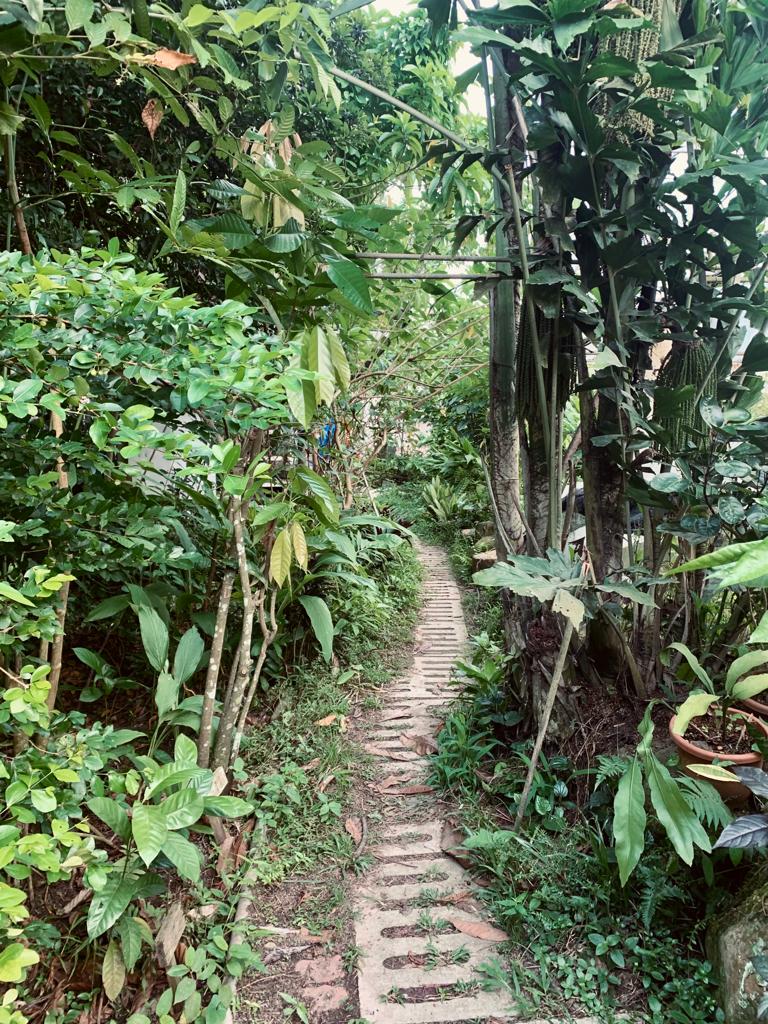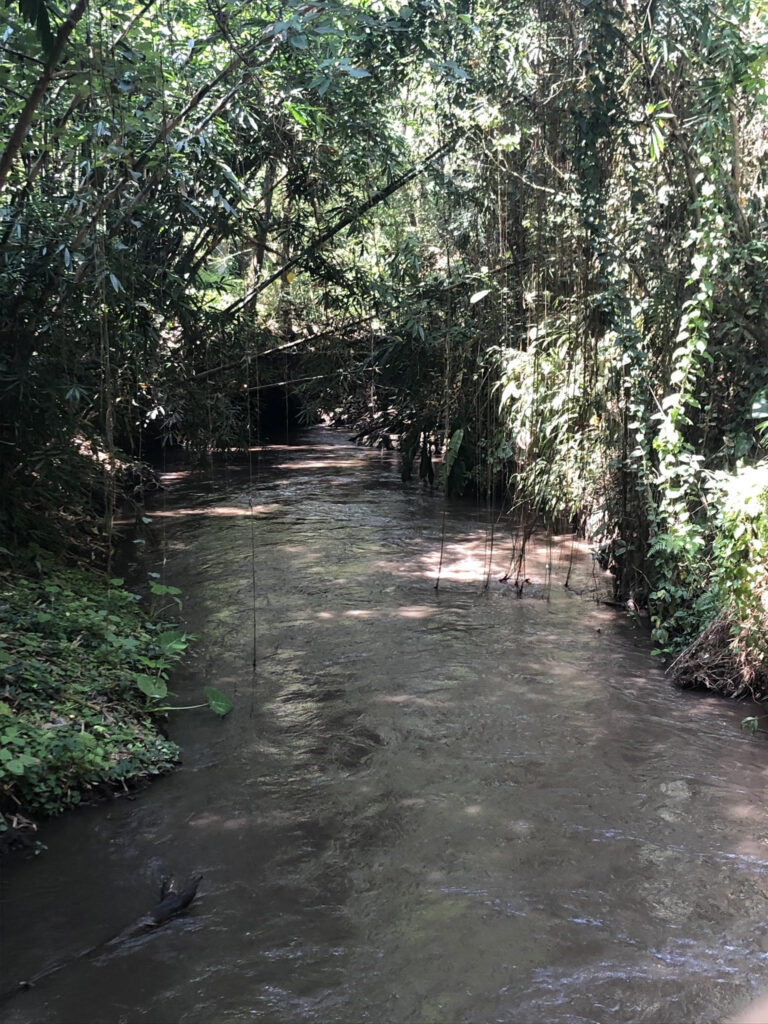“Using mindful-flow to develop particular inner-strengths can rapidly accelerate the pace at which we can grow them. What would normally take much longer, mindful-flow enables us to assimilate with confidence in a much shorter period”

Dear Integral Meditators,
This week’s article looks at a major foundation of integral meditation practice, mindful-flow, what it is and how to go about starting to use it in your life.
If you enjoy it, then do consider coming along to this Saturday’s Deep-dive meditation mini-retreat, where we will be putting mindful-flow to good use!
This week’s Tues & Weds evening class is on the art of non-thinking.
In the spirit of flow,
Toby
Using mindful flow to train in strengths-building
What is mindful flow?
Mindful flow is a method of concentration that meditators use to remain present in their practice, and stay present for extended periods. It consists of two complementary qualities:
- The quality of focus
- The quality of relaxation
Often when people begin meditation, they try a bit too hard to focus, which means they then have difficulty relaxing, which then means their mind has difficulty settling into meditative presence. Other people relax a bit too much and find themselves falling asleep, which is the other end of the spectrum. So good quality mindful concentration contains the alertness of focus, in combination with the ‘flow’ of relaxation, hence mindful-flow. If complete relaxation to the point of sleep is a 0, and absolute effortful focus is a 10, in meditation we are generally trying to stay somewhere within the 4-6 range.
Building the technique of mindful flow
Generally, I recommend specifically developing your practice of mindful flow as an exercise, which can be done using a simple breathing technique:
- Breathing naturally, as you breathe in, emphasize focusing your attention on your in-breath. You can focus on a particular area of the breathing (like the movement of the belly for example), or the overall sensation of it.
- As you breathe out, emphasize relaxing your body and mind. If you are aware of particular areas of tension in the body, you can be specific in relaxing those body parts.
You can practice mindful flow continuously for 5-10minutes, or if you like you can do it in sets, for example:
- 3-5 breaths of mindful flow, followed by a short pause, and when you are ready repeat.
I find that this second technique is quite useful, because it encourages you to really focus well for those 3-5 breaths!
Using mindful flow to bring strengths & strength-combinationsOnce you have practiced mindful flow, and got a sense of that balance of focus and relaxation, you can then use it to build strengths, qualities and capacities within you. Here I am going to use gentle-determination as an example. Once you understand how to do it with one quality, you know how to do it with others. So then with gentle-determination:
- For the first part, as you breathe in, connect of a sense of gentleness, as you breathe out, relax into that feeling of gentleness.
- In the second part, connect to a sense of determination, perhaps about something specific in your life right now. As you breathe out, feel that sense of determination as an attitude in the mind and as an energy in the body.
- In the third section, bring the qualities of gentle-determination together; as you breathe in connecting to determination, as you breathe out soften that determination with an appropriate degree of gentleness.
You can spend as much time as you like on each section, but ideally the most time would be spent with stage three, bringing the gentleness and determination together into a flow.
Dropping into a mindful-flow state and using it to develop particular strengths and qualities can rapidly accelerate the pace and depth at which we can grow them within us. What would normally take much longer to develop competency around, mindful-flow enables us to assimilate with confidence in a much shorter period of time!
Article & content © Toby Ouvry 2024, you are welcome to use or share this article, but please cite Toby as the source and include reference to his website www.tobyouvry.com
Follow Toby on: LinkedIn, YouTube, Instagram
Integral Meditation Asia
Online Courses * 1:1 Coaching * Books * Live Workshops * Corporate Mindfulness Training *Life-Coaching * Meditation Technology

